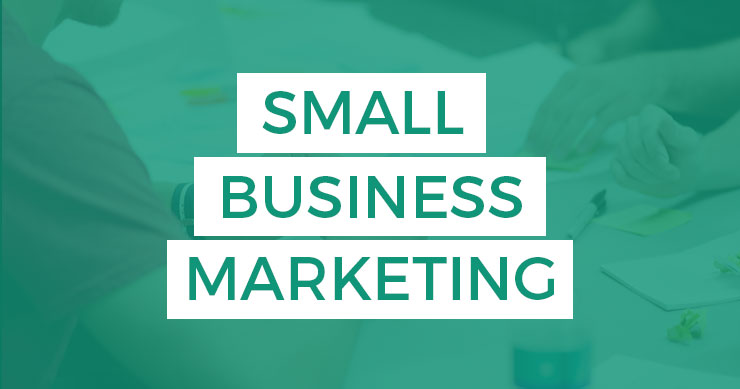 Still with me? If you are, I sure appreciate it! I have a whole new respect for what Lisa does at nearly every conference she attends. But I also hope you’re still with me because this is a great session! Who doesn’t love link bait? And who hasn’t seem some really bad link bait? We all like to think we’re doing it right, but the number of badly done infographics out there says otherwise. We need to up our game, and Rob Millard is going to show us how.
Still with me? If you are, I sure appreciate it! I have a whole new respect for what Lisa does at nearly every conference she attends. But I also hope you’re still with me because this is a great session! Who doesn’t love link bait? And who hasn’t seem some really bad link bait? We all like to think we’re doing it right, but the number of badly done infographics out there says otherwise. We need to up our game, and Rob Millard is going to show us how.
Rob starts out by telling us that while there are all kinds of link bait, he’s going to focus on infographics. He’s noticed a bit of a backlash lately, so he wants to share some ideas on how to avoid that, and use infographics for successful link building.
He says we all know site design is an important part of the trust factor, and that applies to the content we put out as well. Why use something that’s badly designed?
Rob shows us some horrible example of infographics. You’ve seen them, right? The pointless, the chart-fests, the badly designed, and the cartoons. Really, people? Cartoons? They don’t always make a good visual story [unless you’re The Oatmeal]. It could make a decent blog post, but it just doesn’t work as an infographic.
Rob says we need to stop making bad infographics. It doesn’t look good for the community, and it doesn’t help our reputation in other industries, either. There’s also a lot of money in linkbait, compared to other link building tactics.
You can still get links with good infographics. They’re a valid tactic to build clean links.
Rob says he’s made some infographic mistakes in the past, but learned from them. You need to ask yourself if link bait is right for the project. Infographics are typically good for things like links to your blog, brand homepages links, etc. Also Ask yourself how much passion and creativity you have for the project. Too little is usually a bad thing, but so is too much. You can go overboard and completely miss your own point.
What’s your hook?
Find a specific niche or angle you can focus on to build an informative and linkable infographic. Find things that people care about to build links. Rob mentions “ego bait.” [Love that.] Here are some things that make for good infographic topics:
- saving time
- saving money
- avoiding hassle
- avoiding risk
- looking good
- feeling good
Too many cooks can spoil the infographic
If you get too many people (client, PR, developer, SEO, project lead) involved in producing an infographic, they’ll all have different ideas of how it should be done. You need to keep everyone on track, and on the same page.
Despite the name, link bait needs outreach. No one’s going to see it if you don’t bring people to your site.
Get curious about data visualization. Rob recommends a book The Visual Display of Quantitative Information by Edward R. Tufte. The book talks about how to use your charts and reports, but goes deeper than that and uses past examples. He highly recommends it.
Rob also recommends Flowing Data by David McCandless and Made to Stick by Chip & Dan Heath.” It’s a lot of reading, and a lot to wrap your head around. You don’t ALL have to be good at data visualization, as long as you have at least one person on your team who is, and you know when to get them involved.
Start with great data. In other words, know your audience. Know what they’re looking for, what interests them. This can help you determine what kind of link bait to build, what kind of infographics to produce, and what topics to use.
If you can’t find data, create it. There are plenty of tools at your disposal that will allow you to gather data before you build link bait to make sure it will be effective:
- APIs – programmable Web and search
- Open Data – data.gov; bls.gov
- Surveys – Survey Monkey; Mechanical Turk
Rob suggests that before you build an infographic, you ask yourself a few questions:
- Is this worth visualizing?
- Does it make complex data easier to understand?
- Does it make something boring exciting?
- Could it just be a blog post?
Before you even build the infographic, see if you can find ten link prospects in ten minutes. If you can’t do that, you probably need another idea.
Get a process so you can assign everyone involved specific tasks and deadlines. You need to do market research, brainstorm, data research, and don’t forget to edit [and proof!]. Check in with everyone often. You need to make sure you’re all on the right track, and meeting goals. Finally, there’s promotion. Rob says it seems like promotion should only take about an eighth of the total time to produce and disseminate an infographic, but it will actually most likely take the most time. Again, there’s no point in creating link bait if no one’s going to see it.
Ultimately, we’re here to get links, and it takes a lot of work. Distilled has a comprehensive link bait guide that outlines some of these techniques and more.
Capitalize on format
Sites familiar with content + format = easiest links. One way to get links quickly is to target sites that do nothing but publish infographics. But if a site has never seen an infographic before, you have to change your outreach. Offer them an embed code. Make it as easy for them as possible.
Leverage your client’s team
If your client has a big brand name, use it to get links. Use existing relationships with other SEOs, bloggers, etc. You may have to ask others with more authority to reach out to certain outlets to increase your chances of securing a link.
What Next?
Where does Rob see infographic link bait going in the near future?
- Interactive visualizations – You have to do something great to get noticed. If you’re doing something with CSS3 or HTML5, look for blogs posting about those topics. They’re potential sites for links.
- Personalization – Rob gives us an example of an interactive infographic where you enter your salary, and spending, and it shows you where your money is going.
- Real Time – We see an example of interactive timelines, using Occupy Wall Street as an example. The interactive infographic shows tweets and retweets as they happen.
- It’s not the format of infographics that’s going to change. Social signals are becoming a more important factor as well.
Rob ends the session on one important thought: What’s your hook? If you can come up with a great story, if your hook is great, you’re going to be successful. I can’t wait to get all the presentations after the conference and look at this one in more detail!


